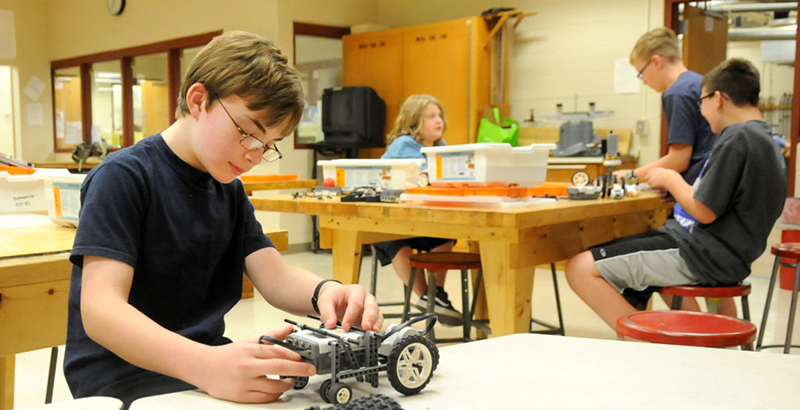Aylesworth: We’re Teaching STEM Wrong — but Any Teacher Can Do It Right. It’s About Trial and Error, Doing Things & Watching Them Not Work

In almost every school program, every teacher is teaching STEM in one way or another. Not just because it’s a hot topic or because of the down-the-road career opportunities for students; educators mix science, technology, engineering and math with just about everything because of its clear value to learning itself. Many even sneak the artsy “A” in there and call it STEAM.
The problem is, too many are teaching it wrong.
In particular, educators tend to show STEM to students. Or, even worse, show STEM outcomes. They demonstrate products like robots and rovers and drones, showing and telling their way through. But flying a drone in class, or even letting students do it, is not teaching STEM; it’s an in-class field trip. It’s no more teaching STEM than a trip to a zoo teaches veterinary medicine.
Teachers tend to show and tell STEM because too many think they’re unqualified to teach the mechanics of engineering or the hard edges of technology. They think teaching is a soft skill, and even if they know they’re capable of teaching STEM subjects, too many educators feel they lack the time to learn a complicated, rapidly evolving new thing.
I train teachers every day, and they have told me this more times than I can count.
We need to dispel the belief that you need technology or a background in medicine or engineering to teach STEM. Especially in the early grades, it’s a stand-in for foundational skills such as logic, sequencing and creative problem-solving. It is about trial and error – doing things and watching them not work. Nearly all of us remember from our earliest science classes that controlled trial and error is the essence of the scientific method. This is how we learn.
The point is that teaching STEM is supposed to be dirty, messy, playful and filled with failures. Failure is how you know you’re doing it right. Teaching STEM (and STEAM) is a mindset, not a specific tool or skill set honed from a specialized graduate education or an undergraduate degree in mathematics or biology. Any teacher can do it, and do it very well, without being an expert.
Letting students figure, reason and fail is a vital part of the education process and something teachers should show and encourage. Let them get their hands dirty and learn by touching and tinkering. STEM and STEAM are creation sciences, not textbooks, so don’t ask students to pilot a drone — challenge them to build one. Did they learn something when it crashed? If they did, they deserve an A.
Rewarding failure may seem like an odd thing for a teacher. And it may feel like a leap of faith to jump into STEM teaching if it’s not your passion or your background. But it’s not as hard as you think. You do not need to be a rocket scientist to teach rocket science.
You can tinker and innovate; model the science and engineering behavior you want to see in your students. Be curious; be creative. Ask questions. Find help. There are lots of amazing resources and partners in and around our learning spaces that map out the discovery process and can help teachers find and leverage activities, lessons and projects that inspire students to do STEM.
You just need to be the guide.
Hilary Aylesworth is vice president of product for SAM Labs. She has a Ph.D. in educational neuroscience from Columbia University and has taught in the U.S. and U.K.
Get stories like these delivered straight to your inbox. Sign up for The 74 Newsletter

;)